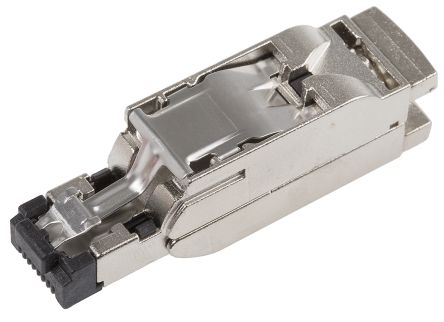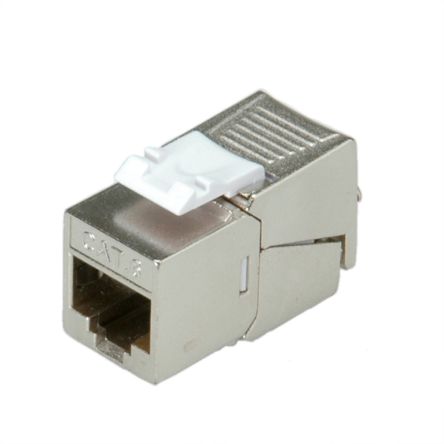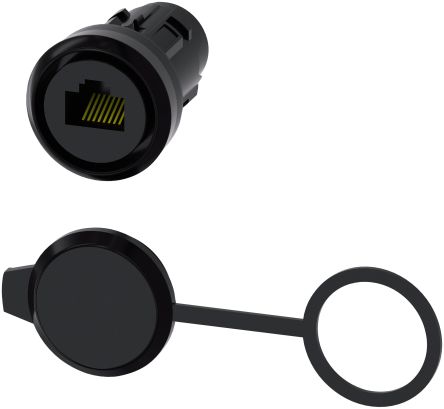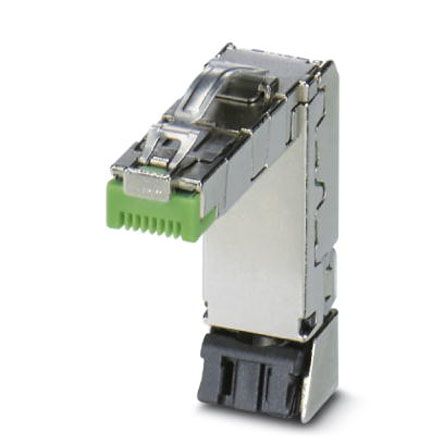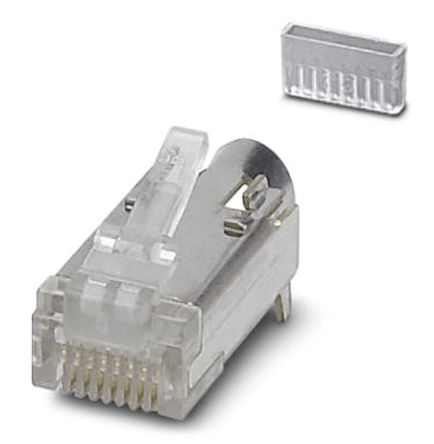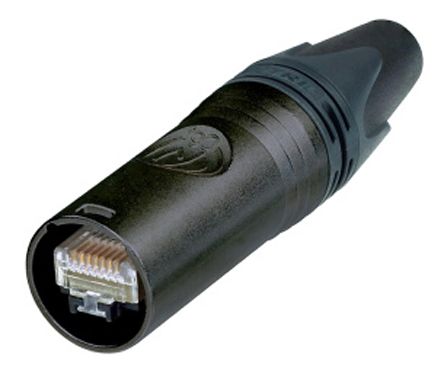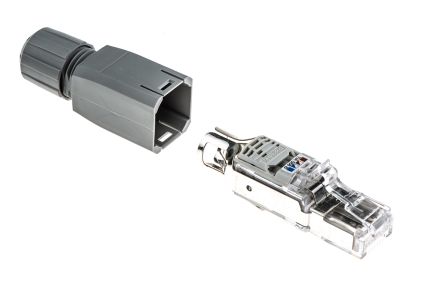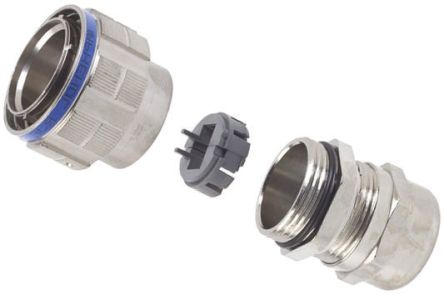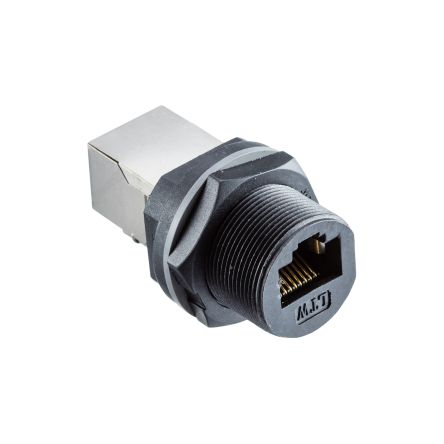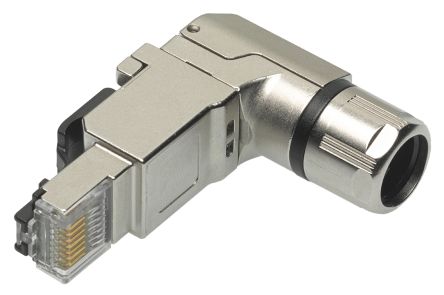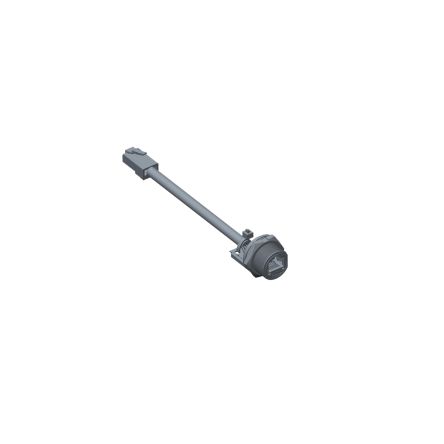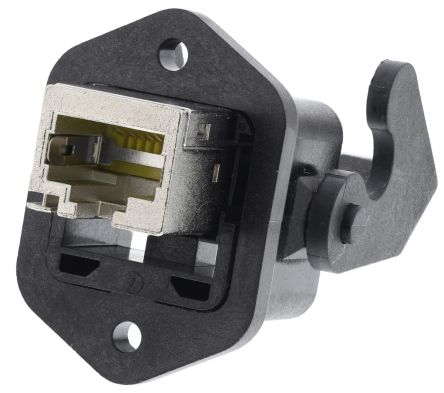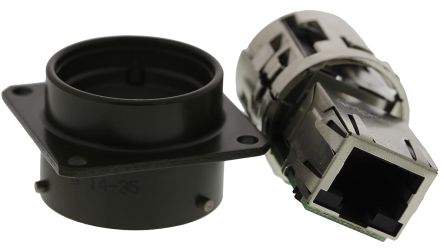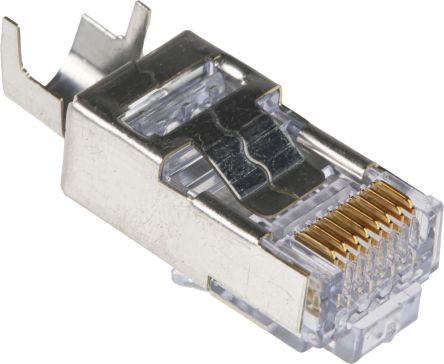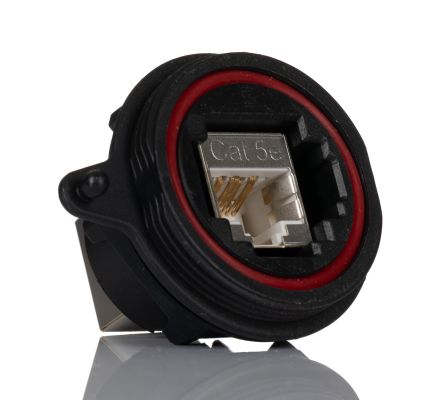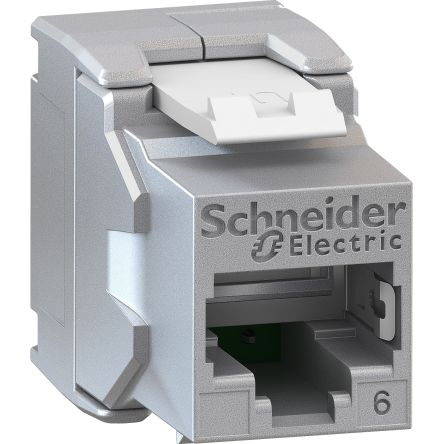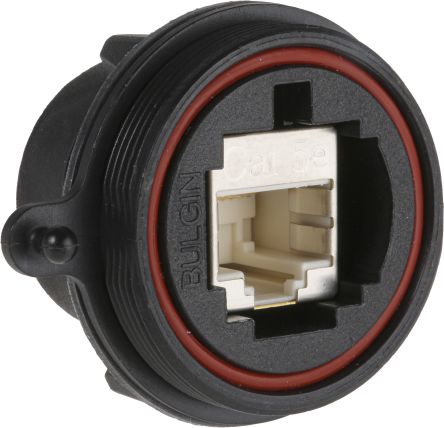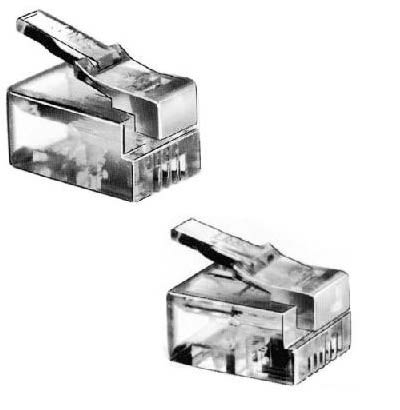- Automation & Control Gear
- Cables & Wires
- Enclosures & Server Racks
- Fuses & Circuit Breakers
- HVAC, Fans & Thermal Management
- Lighting
- Relays & Signal Conditioning
- Switches
- Batteries & Chargers
- Connectors
- Displays & Optoelectronics
- ESD Control, Cleanroom & PCB Prototyping
- Passive Components
- Power Supplies & Transformers
- Raspberry Pi, Arduino, ROCK, STEM Education & Development Tools
- Semiconductors
Ethernet Connectors
Ethernet connectors are used for Ethernet networking such as telecommunications or data equipment. The ethernet connectors are connected to each end of an Ethernet cable. Ethernet connections between devices provide a reliable, stable and interference-free connection with fast data transfer speeds and are sometimes more preferred than wireless or Wi-Fi networks.
The RJ45 connector is the most commonly known type. RJ45 connectors have an 8P8C (8 position, 8 contact) configuration. In order for the connector to function properly, the individual Ethernet cable wires must be inserted into these locations following a T-568A or a T568B wiring standard. Technically, 8P8C can be used with other types of connections besides Ethernet; it is also used with RS-232 serial cables, for example. However, because RJ45 is by far the predominant usage of 8P8C, industry professionals often use the two terms interchangeably. RJ45 connectors are available to suit a range of LAN categories from Cat3 to Cat6a. Different mounting options are also available, including cable mount, PCB mount and panel mount.
Ethernet networks are very common in domestic and working environments. A network is simply several interconnected devices that are capable of sharing data between one another. Home networks are usually based around a router or modem, connected to various other devices such as PCs and laptops, smart TVs, mobile phones, games consoles, media servers and printers. A domestic internet setup of this kind is an example of a LAN (Local Area Network). The name comes from the fact that all devices linked to it are close to the others, typically within the same building.
Types of RJ Connectors
- RJ11
- RJ12
- RJ22
- RJ25
- RJ45
- RJ48
- RJ50
RJ45 connector is used today to describe both male RJ45 plugs and female RJ45 sockets. The plugs, sometimes called modular connectors, are usually found on the end of Ethernet cables. The sockets or jacks are generally embedded in the device that is being hooked up or mounted to a fixed wall panel.
Other Types of Ethernet Connectors
Mini-IO connectors are small wire-to-board interfaces suitable for most environments. These connectors are easily installable without the need for wire termination and soldering activities. A mini-IO connector consists of a housing, a shell and a terminal with contact points. The outer materials are made from thermoplastics, which makes them highly resistant to shock, vibration and extreme temperatures. The terminals have contacts made of copper alloy, which increases conduction for highly reliable connection features. Latch mechanisms prevent cables from pulling out of the mini-IO connectors.
What Are RJ Connectors Used for?
RJ stands for registered jack which is a standardised networking interface. RJ45 connectors are used for connecting Ethernet cables to equipment in computer networking applications such as telecommunications or data equipment. RJ45 connectors consist of modular jacks and plugs. The RJ45 plugs are connected to each end of an Ethernet cable.
Industrial Application of Ethernet Connectors
Ethernet connectors, particularly the ubiquitous RJ45 connector, are foundational elements in modern industrial networking. They facilitate seamless data transfer and communication between various devices and systems, contributing to operational efficiency and productivity. Let's explore some key industrial applications:
- Automation Technology: Ethernet connectors form the backbone of industrial automation networks, enabling the interconnection of PLCs, sensors, actuators, and other devices. Real-time data exchange through these connectors allows for precise control and monitoring of automated processes.
- Robotics: Robots rely on high-speed, reliable communication with their control systems. Ethernet connectors, including robust industrial variants, provide the necessary connectivity for seamless data transfer and command execution.
- Communications: In telecommunication networks, Ethernet connectors are used extensively to link switches, routers, and other network equipment. They support high-bandwidth data transmission, ensuring efficient communication across large-scale networks.
- Transportation: Modern transportation systems, including railways, aviation, and automotive, utilize Ethernet connectors for critical communication and control. From onboard diagnostics to traffic management systems, these connectors ensure safe and efficient operation.
- Navigation: Ethernet connectors play a role in navigation systems, connecting GPS receivers, sensors, and display units. They facilitate real-time data transmission, enabling accurate positioning and guidance.
- Test and Measurement: In laboratories and industrial testing environments, Ethernet connectors are used to connect various instruments and equipment, allowing for efficient data acquisition and analysis.
- Military: Ethernet connectors are found in various military applications, including communication systems, radar, and weapon control. Their rugged construction and reliability make them suitable for demanding environments.
- Agriculture: Precision agriculture increasingly relies on networked sensors and control systems. Ethernet connectors facilitate the interconnection of these devices, enabling remote monitoring and control of irrigation, fertilisation, and other agricultural processes.
These are just a few examples of the diverse industrial applications that leverage the capabilities of Ethernet connectors. Their adaptability, reliability, and high-speed data transmission capabilities make them critical components in various modern technologies and industries.
Frequently Asked Questions About Ethernet Connectors
Does an Ethernet connector affect speed?
Generally, a well-made and properly installed Ethernet connector, such as an RJ45 connector, should not significantly impact network speed. However, low-quality connectors or faulty installations can introduce signal loss or interference, potentially leading to slower data transfer rates. To maintain optimal performance, it's important to use high-quality Ethernet connectors and ensure they are properly crimped and connected to your Ethernet cable.
How do you use an Ethernet cable connector?
Ethernet cable connectors, commonly RJ45 connectors, are used to terminate the ends of Ethernet cables. The process involves carefully arranging the individual wires within the connector according to the T-568A or T-568B wiring standard, then using a crimping tool to secure the wires and the connector housing together. This creates a reliable connection between the cable and a network device, such as a router, switch, or computer.
Do Ethernet connectors degrade signal?
While Ethernet connectors themselves shouldn't degrade the signal, poor-quality connectors or improper installation can lead to signal loss or degradation. Issues like loose connections, bent pins, or incorrect wiring can impact the signal integrity, potentially causing slower speeds or intermittent connectivity. It's essential to use high-quality Ethernet connectors and follow proper installation procedures to maintain optimal signal quality.
Delivery Information
RS offers fast delivery of Ethernet connectors, including RJ45 connectors and LAN plugs, along with essential networking accessories like Ethernet cables and patch panels. For more details on delivery services and fees, please refer to our Delivery page.
Explore the new look of the category page
Popular Searches
- Amphenol ICC Ethernet Connectors
- Amphenol Socapex Ethernet Connectors
- Bel-Stewart Ethernet Connectors
- Bulgin Ethernet Connectors
- Cat 5 Plugs
- Cat 6 Connectors
- CONEC Ethernet Connectors
- Halo Electronics Ethernet Connectors
- HARTING Ethernet Connectors
- Hirose RJ45 Connectors
- Industrial Ethernet Connectors
- MH Connectors Ethernet Connectors
- Molex Ethernet Connectors
- Phoenix Contact Ethernet Connectors
- Re-An Products Ethernet Connectors
- RJ45 Connectors
- Rj9 Connectors
- RS PRO Ethernet Connectors
- Samtec Ethernet Connectors
- Schneider Electric Ethernet Connectors
- Siemens Ethernet Connectors
- Stp Cables
- TE Connectivity Ethernet Connectors
- Telegartner Ethernet Connectors
- Wurth Elektronik Ethernet Connectors
Related links
- Ethernet Cable
- RS PRO Male RJ45 Connector, Cable Mount Straight 8P8C -Way
- Network Testers
- RS PRO Green RJ45 to Male RJ45 Male Terminated PVC Sheath
- Roline Connectors RJ-45 Series Male RJ45 Modular Plug Cat8 1 Port 1 -Way
- Microchip EVB-LAN9354-RMII LAN8740A PIC32 USB, RJ-45 Ethernet...
- RS PRO Blue RJ45 to Male RJ45 Male Terminated PVC Sheath
- RS PRO Female RJ45 Connector Cat5e, UTP Shield Straight 8P8C -Way

